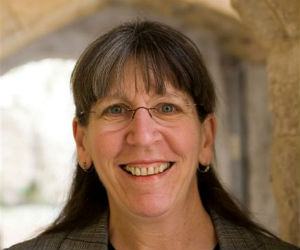“Two women and five children.” As a tour guide, I never fail to notice that no matter how tired and sunbaked my group may be at the end of their Masada visit, these five words perk them up.
By that moment I have already shared the story leading up to the deaths of almost 1,000 rebel Jews at Masada in 73 CE. I have already told them that when we want to know what happened on that Judean Desert plateau in the wake of the Roman siege and its last blood-soaked chapter, there’s only the ancient historian Josephus to turn to. When I tell them about the two women and five children Josephus says survived, people always ask me: “What happened to them?” And I have to tell them the truth –Josephus says not one word about their fate.
 And so I resolved to discover my own answer to the mystery. It came to me because of the only other place where the name of the Masada fortress appears in antiquity: on a scroll – the one that gave my book its name – discovered in a Judean Desert cave in 1951. The content? Terms for the dissolution of the marriage of one Joseph and Miriam. The dateline? Masada.
And so I resolved to discover my own answer to the mystery. It came to me because of the only other place where the name of the Masada fortress appears in antiquity: on a scroll – the one that gave my book its name – discovered in a Judean Desert cave in 1951. The content? Terms for the dissolution of the marriage of one Joseph and Miriam. The dateline? Masada.
What was the story behind this couple?
As committed as they were to fighting to the death for the cause of Jewish freedom, why in the world would they become so sidetracked by mere marital discord?
And then came my “what if?” What if one of the two women who survived Masada was the Miriam of the divorce document? What if there was another reason that she and Joseph ended their marriage? With trepidation I cold-called Magen Broshi, the former curator of the Israel Museum’s Shrine of the Book, to ask if my idea had merit. “Say anything you want. We have no idea what happened to her,” he said with typical Israeli gruffness.
And so I broadened my research and I learned that the Babylonian Talmud, Ketuboth (9a) states: “Everyone who goes out into the war of the House of David writes for his wife a deed of divorce.” The purpose of so doing, the sages said, was that in case a warrior died, but his death could not be verified, the widow would not be left in limbo – “chained” – as the Hebrew term aguna is rendered in English, unable to move on and affirm life as Jewish law, custom and tradition certainly intended.
I was inspired to write The Scroll because I wanted to discover and share how Miriam of Masada was able to face life despite all the horrors she had seen, turning her back on everything familiar. I wanted to bring to life how the generations that came after her understood her sacrifices and found their own answers, including their response to the hopeless disaster of the Bar Kokhba war. I wanted to infuse readers with the minutia of daily life of the Jews and Christians who peopled first-century Judea, Galilee and beyond, because I believed, as I still do, that in the minutia of their daily lives we can find answers to more than just ancient questions. We can learn life lessons from history that will help us understand the geo-political and religious tensions of today.
The post [BLOG] The Scroll: A Masada Survivor’s Fate Told through a Real Archaeological Find appeared first on Breaking Israel News | Israel Latest News, Israel Prophecy News.
Source: Israel in the News


